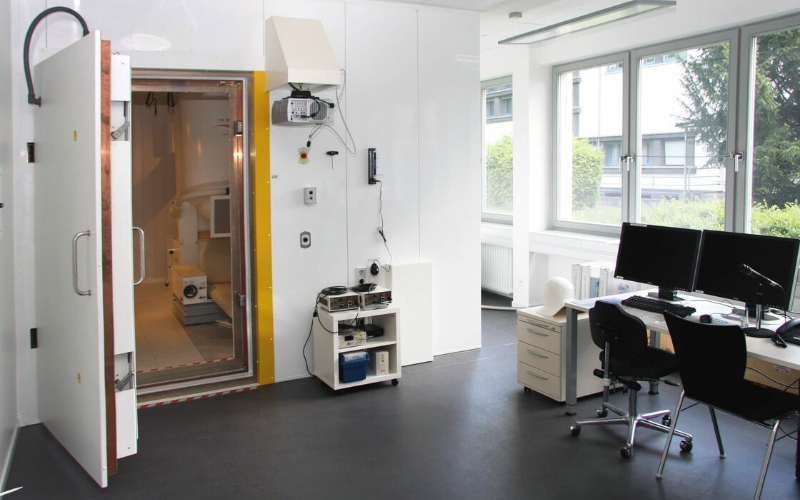Back | Blog posts overview
Molybdenum in magnetically shielded rooms
22/06/2023
Detecting nature’s tiniest magnetic activity for medicine and research relies on suppressing a constant barrage of external magnetic influence. For decades, a molybdenum-containing alloy called mu-metal has been used as a magnetic shielding material due to its ability to divert both the Earth’s natural magnetic field and manmade sources. Today, rooms clad in layers of mu-metal and similar alloys provide unfathomable levels of magnetic shielding for procedures that save lives and extend the frontiers of science.

© VACCUUMSCHMELZE
The typical strength of magnetic signals generated by human brain activity is around one billionth of the strength of the earth’s magnetic field. To measure and analyze such weak signals without them being drowned out by the environment’s much stronger magnetic field, a magnetic shielding room (MSR) is necessary to provide passive shielding. MSRs are critical for diagnostic imaging techniques of the heart and brain, such as magnetoencephalography (MEG), a non-invasive procedure used in planning for surgeries and epilepsy treatment. MEG is also very important to psychiatric and neuroscience research. For example, university researchers in Pittsburgh, US, placed subjects in an MSR and used MEG to measure their brains’ magnetic activity while listening to music, revealing key insights about how humans perceive sound. Indeed, MSRs are used in a variety of research applications ranging from cognitive science to aerospace. A stable MSR with consistent performance over the years is crucial in maintaining the precision of the multi-million-dollar systems within.
The end-use applications for MSR are niche but have the potential to expand. This expansion is not only driven by a developing healthcare infrastructure globally, but also by the emergence of new research areas. Several prestigious laboratories worldwide have installed magnetic shielding chambers to study the fundamental principles of particle physics. For example, the Paul Scherrer Institute in Switzerland, in partnership with VACUUMSCHMELZE GmbH & Co. KG, developed an elite MSR that dampens external magnetic influence by a hundred thousand times. This allowed researchers to detect subatomic magnetic signals previously invisible to the latest-generation sensing technology. To achieve greater sensitivity, over 10 times more precise than its predecessor, this MSR uses more and thicker layers of mu-metal shielding than standard units. Regardless of the application, with molybdenum nickel-iron soft magnetic alloys will remain the ideal material for magnetically shielded rooms.
Find out more about the history of MSR and Mu-metal in our recent MolyReview article.
Back | Blog posts overview

